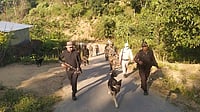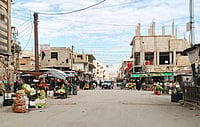Post September 11, an alert had been sounded and security agencies in India had prepared a contingency plan precisely for such attacks. Agencies in North Block now claim the intercepts and warnings were neither time- nor place-specific. But the assertion by security officials in the capital is at variance with what Mumbai’s police commissioner M.N. Singh and Maharashtra home minister Chhagan Bhujbal state. According to Singh, Mumbai police had passed on specific information to the Intelligence Bureau (IB) about suspected Al Qaeda operative Mohammed Afroze’s confession that there was a plan to blow up Parliament. Bhujbal told Outlook: "I had personally informed the home minister about the intended attack." Afroze was picked up by Mumbai police on October 2 and had reportedly confessed that he and his co-conspirators had finalised plans to attack the Indian Parliament and the Rialto Towers in Australia.
Afroze may not have succeeded, but the ease with which the five-member fidayeen (suicide) group slipped through the security cordon and drove into the Parliament complex has exposed the chinks in the security shield. Very clearly, intelligence inputs are not taken seriously and acted upon. Incidentally, just 24 hours earlier, Prime Minister Vajpayee had told those who had gathered for Sharad Pawar’s 61st birthday bash in Mumbai that threats to blow up Parliament were "real" and not "figments of the imagination".
But security personnel wring their hands in despair, saying they can’t act on every strand of information coming to them. "No security apparatus in the world can prevent a suicide attack. There is very little one can do in this kind of a situation," said a top official in the IB. "What is there to stop someone driving a three-tonner loaded with rdx into a protected building?" asks another official.
How easy is it then to infiltrate Parliament? Despite having a three-tier security structure, all it requires for a person to enter the premises is to wave down a vehicle with a Lok Sabha or Rajya Sabha sticker. Alternatively, one can drive through with a fake sticker. The ease with which the initial layer of security in Parliament can be breached clearly points to a security weak link in a high-risk zone.
Many MPs collect more than one sticker when Parliament is in session and these can be used by anyone to drive into the premises. Currently, there are over 800 MPs, while the number of ex-MPs run into thousands and they ask for more than one pass which they distribute. Similarly, relatives and close friends of the watch and ward staff, who visit Parliament, are given access to prohibited areas.
Besides, the beacon lights on MPs’ vehicles are frequently abused. This year, 48 vehicles were issued notices for using such lights in violation of traffic laws and 68 persons were prosecuted by the city police. "Using a beacon light is a status symbol and many have realised that this is a way to avoid frisking and cursory checks," says a Parliament security officer.
One thing the security agencies have realised after last week’s attack is that the magnitude of the incident could have been far more serious—had the vice-president decided to leave Parliament earlier or had the prime minister not delayed his arrival, they would have been easy targets for the fidayeen.
But A.R. Mahipati, joint secretary (Parliament security), contests this. He claims that the improved security drill would not have allowed the suicide group access into the building. "It was detected on time and neutralised," he says.
Realising a number of lessons need to be learnt from the audacious attack, security agencies are now gearing up to tighten access control not just to Parliament but also other government buildings. "We might have to extend the security perimeter of Parliament to the outside gates and introduce an S-system where vehicular speed is controlled," says a security official. The possibility of introducing stationary jammers, a device which can incapacitate remote-controlled gadgets and introducing video surveillance at strategic locations is now being contemplated.
The attack has indeed come as a wake-up call. Intelligence and security agencies realise that strict safeguards have to be in place to prevent any such future attacks. They realise that bolstering security or posting additional forces following a firing or a bomb attack is no solution. Effective monitoring and use of intelligence inputs is the key to thwarting attacks.
Murali Krishnan With Priyanka Kakokdar


























